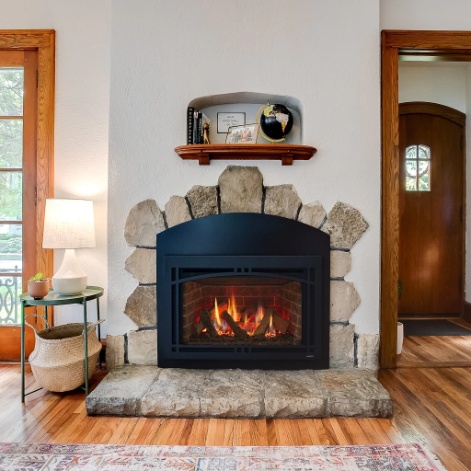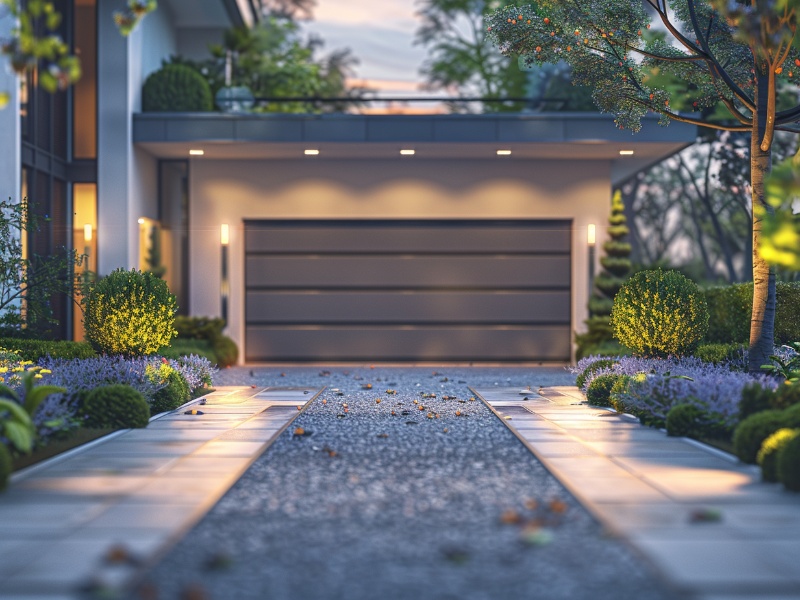Table of Contents
Have you ever wondered why your marble fireplace looks different than the one you saw in the showroom?
Several factors influence the appearance of marble, including lighting, surrounding colors and materials, maintenance, and natural variations in the stone.
We will explore these factors and provide tips on how to make your marble fireplace look like the one you fell in love with at the showroom.
Let’s dive in and discover how to enhance the beauty of your marble fireplace.
What Is Marble?
Marble is a natural stone known for its elegant appearance, luxurious design, and versatile material properties.
It is characterized by unique patterns, colors, and textures that add sophistication to any setting.
Marble has been used for centuries due to its origins deep within the earth’s crust.
Formed from limestone subjected to intense heat and pressure over millions of years, marble transforms into a beautiful crystalline structure.
This metamorphic rock offers a diverse range of colors, from classic white and gray to vibrant shades of red, green, and blue.
Each color displays distinctive veining and swirling patterns.
The natural variation in marble enhances its visual appeal and makes each piece a one-of-a-kind work of art.
This uniqueness makes it a popular choice in interior design.
What Are The Different Types Of Marble?
The different types of marble include Carrara, Calacatta, Emperador, and Statuario.
Each type exhibits unique color variations, veining patterns, and levels of craftsmanship that influence its aesthetic appeal and suitability for various design styles.
Carrara marble, known for its subtle grey veining on a white or blue-grey background, offers a classic and timeless look.
In contrast, Calacatta marble boasts bolder, thicker veining with a creamy white base, making it a luxurious choice for high-end spaces.
Emperador marble, with its rich brown tones and occasional white veining, adds warmth and elegance.
Statuario marble features dramatic veining in grey or gold hues on a white background, perfect for creating a sophisticated and upscale ambiance.
The selection of marble type can truly transform the character of a room, whether it be a sleek modern design or a traditional setting.
What Are The Characteristics Of Marble?
Marble exhibits a balance of hardness and porosity that affects its durability and maintenance requirements.
Its elegant appearance is complemented by a level of care and cleaning necessary to preserve its beauty over time.
The hardness of marble makes it resistant to scratching and chipping, ensuring longevity in various settings.
However, its porous nature renders it susceptible to staining if not properly sealed and maintained.
Regular sealing of marble surfaces can help protect them from absorbing liquids and oils that could cause discoloration.
To maintain marble’s pristine look, it’s essential to clean it with pH-neutral cleaners and avoid acidic substances that can etch the surface.
Implementing a routine cleaning schedule and addressing spills promptly can go a long way in preserving the quality and elegance of marble surfaces.
What Is The Hardness Of Marble?
Marble’s hardness varies depending on the specific type and quality of the material.
Higher-quality marble sourced and crafted with precision exhibits greater hardness, making it a valuable investment for properties seeking a touch of luxury.
The craftsmanship involved in extracting, processing, and polishing marble significantly impacts its overall hardness.
Attention to detail during the fabrication process can enhance the material’s durability and resistance to wear and tear, thereby increasing its long-term value.
This durability factor makes high-quality marble a popular choice for various applications in interior design, from elegant countertops to exquisite flooring.
Architects and designers often prioritize marble with superior hardness for areas with high foot traffic or where durability is paramount.
What Is The Porosity Of Marble?
Marble’s porosity defines its susceptibility to liquid absorption and staining, requiring proper maintenance and cleaning to preserve its appearance.
The surrounding environment and natural variation in marble contribute to its porosity levels.
This means that factors like humidity levels, presence of chemicals, and the overall climate of the location where the marble is installed play a crucial role in determining how porous it will be.
The unique patterns and veining in marble also impact its porosity, with more veins and fissures enhancing its absorption capabilities.
Understanding the porosity of the specific marble used can help in choosing the right sealing and cleaning products to prevent staining and maintain its beautiful aesthetics over time.
What Is The Durability Of Marble?
Marble is renowned for its durability when properly cared for through regular maintenance and cleaning routines.
The layout of the room and its surroundings play a significant role in preserving the durability of marble surfaces.
Factors like exposure to direct sunlight or high humidity levels can impact the longevity of marble.
To ensure its durability, it’s advisable to place rugs or mats in high-traffic areas to prevent scratching or wear.
Using coasters under glasses and avoiding acidic or abrasive cleaners can help maintain the quality of the marble surfaces.
Regular sealing also aids in protecting the marble from stains and etching, thus extending its lifespan significantly.
What Is A Marble Fireplace?
A marble fireplace exemplifies luxury, elegance, and architectural sophistication in any space.
It serves as a captivating focal point that enhances the property’s aesthetic appeal and value.
Its smooth, luminous surface reflects light, creating a sense of opulence and grandeur.
The veining patterns and colors in marble add a touch of uniqueness and elegance to the overall design scheme.
Beyond its visual impact, the luxurious feel of marble exudes a timeless charm, transforming any room into a sophisticated sanctuary.
A marble fireplace not only elevates the ambiance of a home but also increases its property value, making it an investment in both style and financial worth.
What Are The Benefits Of A Marble Fireplace?
The benefits of a marble fireplace include providing warmth, adding coziness to the space, creating a charming ambiance, and serving as a striking focal feature that can be customized to suit individual preferences.
Marble fireplaces not only offer functional advantages but also elevate the aesthetics of any room.
The luxurious look and feel of marble bring a touch of elegance and sophistication.
The customization options available for marble fireplaces allow homeowners to match the fireplace perfectly with their decor style, whether it’s classic, modern, or eclectic.
From choosing the type of marble to selecting intricate designs or carvings, the versatility of marble fireplaces ensures a unique and personalized touch to your living space.
What Are The Drawbacks Of A Marble Fireplace?
While a marble fireplace exudes elegance, it may require regular maintenance and cleaning to preserve its appearance.
The cost and installation complexities are factors to consider when opting for a marble fireplace.
To effectively mitigate the potential drawbacks of owning a marble fireplace, homeowners can implement strategies such as sealing the marble to reduce staining and simplifying cleaning routines.
Regularly dusting and gently wiping down the surface with a mild soap solution can help maintain its shine.
When it comes to upfront costs and installation, obtaining multiple quotes from reputable professionals can aid in finding the best value.
Properly assessing the room size and layout before installation can prevent issues with fit and ensure a seamless integration with the existing decor.
Why Does My Marble Fireplace Look Different Than In The Showroom?
The appearance discrepancy of your marble fireplace compared to the showroom can be attributed to factors like lighting conditions, surrounding colors and materials, maintenance practices, and the inherent natural variation found in marble.
When it comes to lighting, the intensity and direction of light in your own home can significantly impact how the marble’s colors and patterns are perceived.
The surrounding colors and materials in your living space can create contrasting or complementary effects, further influencing the overall look of the fireplace.
Regular maintenance routines, such as cleaning and polishing, can also affect the appearance and luster of the marble over time.
The unique characteristics of marble, including veining, mineral streaks, and color variations, make each piece distinct and add to the individuality of your fireplace.
Lighting
The lighting in your space can significantly impact the appearance of your marble fireplace.
It affects how light reflects off its surface, alters its colors based on viewing angles, and influences the overall ambiance of the room.
By strategically placing lighting fixtures, you can draw attention to the unique veining and texture of the marble.
This creates a focal point in your living area.
Soft, warm lighting can evoke a cozy and inviting atmosphere, perfect for relaxing evenings by the fireplace.
On the other hand, brighter, spotlight-style lighting can highlight the sleek lines and architectural details of the fireplace for a more modern and sophisticated look.
Consider incorporating dimmable lights or a combination of overhead and accent lighting to customize the mood according to different occasions.
Surrounding Colors and Materials
The colors and materials in the vicinity of your marble fireplace contribute to the overall contrast, aesthetics, and room layout.
This influences how the fireplace blends or stands out within its surroundings.
For instance, pairing a white marble fireplace with dark wood accents can create a striking visual impact, highlighting the elegance of the fireplace.
On the other hand, using lighter shades of paint on the walls near the fireplace can enhance the sense of space and airiness.
Incorporating metallic elements such as brass or silver accents can add a touch of sophistication and luxury to the overall look.
Strategically placing furniture pieces around the fireplace can further emphasize its importance in the room.
This creates a focal point that draws the eye and establishes a cozy ambiance.
Maintenance and Care
Proper maintenance and care are essential for preserving the appearance and durability of your marble fireplace.
This ensures its quality and longevity over time.
Regular maintenance plays a crucial role in keeping your marble fireplace looking its best and functioning at its peak performance.
To maintain the luxurious look of the marble surface, it is recommended to clean regularly using a soft cloth or sponge and a mild soap solution.
Avoid harsh chemicals or abrasives that can damage the marble’s delicate surface.
Applying a marble sealant can help protect the stone from stains and etching, further extending its lifespan.
By staying proactive with maintenance tasks, you can prevent cracks, discoloration, and other signs of wear.
This ultimately preserves the beauty and value of your fireplace.
Natural Variations in Marble
The natural variations present in marble can influence the perception and expectations of your fireplace’s appearance.
These variations add an authentic touch that showcases the genuine beauty of this unique material.
Embracing these natural characteristics in marble fireplaces infuses a sense of individuality.
It also reflects the rich geological history that each slab carries.
The veins, swirls, and patterns found in marble are like nature’s artwork, telling a story of its formation beneath the earth’s surface.
While some may seek uniformity, it is the unpredictability of these patterns that often captivates admirers.
This creates a focal point that evolves with time.
By appreciating the imperfections and unique traits of each piece, one can truly celebrate the beauty of nature within their living space.
How Can I Make My Marble Fireplace Look Like the Showroom?
Achieving a showroom-like appearance for your marble fireplace involves diligent maintenance, strategic cleaning practices, optimizing lighting conditions, selecting harmonious surroundings, and embracing the natural variations that make each piece unique.
To start, establish a regular cleaning routine using a soft cloth and a mild soap solution to gently wipe down the marble surface.
Avoid harsh chemicals or abrasive cleaners that can damage the stone.
For deeper cleaning, consider a pH-neutral stone cleaner and follow the manufacturer’s recommendations.
When it comes to lighting, experiment with different options to find the right balance that enhances the natural veining and texture of the marble.
Incorporating accent lighting or adjustable fixtures can create a dramatic effect.
Consider adding decorative elements like artwork or plants that complement the fireplace, drawing attention to its elegance.
Proper Cleaning and Maintenance
Regular cleaning and maintenance routines are essential for preserving the quality and craftsmanship of your marble fireplace.
This ensures its longevity and aesthetic appeal remain intact.
- To effectively clean marble surfaces on your fireplace, begin by gently dusting the marble with a soft cloth or brush to remove any surface debris.
- For regular maintenance, wiping down the marble with a damp cloth can help prevent dust buildup.
When deeper cleaning is needed, use a mild soap or a pH-neutral cleaner mixed with water.
Avoid abrasive cleaners or harsh chemicals, as they can damage the marble.
Remember to dry the marble after cleaning to prevent water stains.
Regularly sealing the marble can also help maintain its natural beauty and protect it against stains.
Enhancing Lighting and Surroundings
Enhancing the lighting and surroundings of your marble fireplace can elevate its ambiance.
This improves light reflection off its surface and creates a captivating focal point within the room.
By strategically placing accent lights such as wall sconces or spotlights around the fireplace, you can draw attention to its intricate details and natural veining.
Consider incorporating dimmable options to adjust the brightness as needed.
This allows for flexibility in setting the desired mood.
Integrating candles or decorative lanterns on the mantel can add a warm, cozy glow.
This enhances the overall charm of the space.
Pairing these lighting elements with complementary decor like artwork or mirrors can further amplify the visual impact.
Using Matching Materials
Selecting matching materials that complement your marble fireplace enhances the overall design cohesion.
This creates visual contrast and elevates the aesthetics of the space.
Incorporating materials such as polished brass accents or sleek glass elements can further emphasize the luxurious appeal of the fireplace.
When choosing materials, consider how textures like timber, leather, or brushed metal can introduce warmth or a hint of industrial chic.
This balances the cool elegance of the marble.
By juxtaposing different textures and finishes, you can achieve a dynamic interplay.
This not only highlights the beauty of the fireplace but also enriches the entire room’s visual impact.
Considering Natural Variations in Marble
Embracing the natural variations inherent in marble fireplaces adds authenticity.
This fosters trust in the material’s unique characteristics and enhances the individuality of your fireplace as a statement piece.
The distinct veining, color variations, and patterns found in marble make each fireplace a one-of-a-kind creation.
By allowing these natural elements to shine, you invite a sense of timelessness and elegance into your living space.
Leveraging marble’s innate beauty as a focal point in home decor offers a touch of luxury and sophistication.
This can elevate the entire room.
Trusting in the longevity and durability of marble ensures a lasting investment.
It also creates a captivating centerpiece that captivates both residents and guests alike.
Frequently Asked Questions
1. What factors influence the appearance of my marble fireplace?
Factors that influence the appearance include lighting, surrounding colors and materials, maintenance practices, and natural variations in the stone.
2. What types of marble are commonly used in fireplaces?
Common types include Carrara, Calacatta, Emperador, and Statuario, each offering unique veining patterns and color variations.
3. How should I maintain my marble fireplace?
Regular maintenance includes cleaning with a soft cloth and mild soap, sealing the marble to prevent staining, and avoiding harsh chemicals.
4. What is the porosity of marble, and how does it affect maintenance?
Marble’s porosity refers to its ability to absorb liquids and stain. It requires proper sealing and maintenance to prevent discoloration from liquids.
5. Why does my marble fireplace look different from the showroom model?
Differences may arise from various factors such as lighting conditions, surrounding decor, maintenance practices, and natural variations in the marble itself.
6. How can I enhance the lighting around my marble fireplace?
Enhance lighting by using accent lights, adjusting brightness levels, and positioning lights to highlight the marble’s features.
7. What are the benefits of having a marble fireplace?
The benefits include warmth, a cozy atmosphere, aesthetic appeal, and the ability to customize according to individual design preferences.
8. Are there any drawbacks to owning a marble fireplace?
Drawbacks may include regular maintenance, potential staining, and higher costs associated with initial installation and care.
9. How can I make my marble fireplace look more like the ones in showrooms?
To achieve a showroom-like look, maintain cleanliness, optimize lighting, and select harmonizing decor elements that enhance its natural beauty.
10. What is the durability of marble, and how does it compare to other materials?
Marble is known for its durability when maintained properly but is more susceptible to staining compared to other harder materials like granite.
Latest Articles

What Is An NG (Natural Gas) Indicator And Why You Need It For Your Fireplace
Table of Contents1 Understanding Natural Gas Fireplaces2 What is an NG Indicator?3 Importance of NG Indicators for Safety4 Types of NG Indicators5 Installation and Maintenance of NG Indicators6 Signs of a Faulty NG Indicator7 Frequently Asked Questions Natural gas fireplaces are a favored option among numerous homeowners due to their convenience and effectiveness. But, what is an NG (Natural Gas) indicator and why you need it for your fireplace? It is imperative to comprehend how they function and the significance of having an NG (Natural Gas) indicator for safety purposes. This article delves into the definition and significance of NG indicators. We will discuss the potential hazards associated with the absence of one and the various types of indicators accessible. Also, we will discuss installation and maintenance recommendations, and methods to recognize and rectify issues with malfunctioning indicators. Stay well-informed and ensure the safety of your home by referring to this exhaustive guide. Understanding Natural Gas Fireplaces Natural gas fireplaces serve as an efficient and convenient heating option for numerous households. They utilize natural gas as a fuel source to deliver consistent warmth and ambiance. How They Work and Why They Need NG Indicators The operation of natural gas fireplaces involves igniting natural gas to generate heat. This process requires diligent monitoring to ensure both safety and efficiency, a task facilitated by the use of NG indicators. NG indicators play a critical role in detecting potential gas leaks. They enable residents to promptly address and mitigate any associated hazards. Through continuous monitoring of gas levels and providing timely warnings and alerts, NG indicators uphold a secure indoor environment. It is imperative to ensure that these indicators function properly to facilitate the effective operation of natural gas fireplaces. This helps mitigate the inherent risks linked to gas leaks. What is an NG Indicator? An NG indicator is a specialized device equipped with advanced sensors and technology. It is specifically designed to detect natural gas leaks and monitor gas pressure in appliances, such as fireplaces. Definition and Purpose The NG indicator functions as a detector that monitors gas appliances for potential leaks. It provides essential functionality to ensure safety in households utilizing natural gas. These detectors play a crucial role in protecting residences by notifying occupants of dangerous gas leaks long before they escalate into perilous situations. Through continuous monitoring of gas levels in the vicinity, NG indicators offer an additional layer of protection. This is particularly important in properties that rely on gas-operated fireplaces or stoves. These devices not only help avert potential disasters but also enhance the overall peace of mind of homeowners. They assure them that their living spaces are equipped with reliable safety features. Importance of NG Indicators for Safety Natural gas indicators are essential for maintaining safety in households equipped with natural gas appliances. These devices serve as a proactive measure to promptly detect gas leaks. This offers homeowners a sense of security and assurance. Potential Dangers of Not Having an NG Indicator The absence of an NG indicator in residences equipped with natural gas appliances can pose significant hazards. This includes the risk of undetected gas leaks , carbon monoxide poisoning , and pilot outages that may lead to dangerous situations. These potential risks can profoundly impact indoor air quality. They directly influence the health and safety of individuals residing in the household. Undetected gas leaks can go unnoticed, gradually permeating the air and creating a potentially explosive environment. Insufficient ventilation from undetected exposure to carbon monoxide can lead to serious health complications. These range from mild symptoms such as dizziness to fatal poisoning. Without proper monitoring from an NG indicator, families are left susceptible to these concealed threats. This underscores the critical importance of implementing proactive measures to mitigate such risks. Types of NG Indicators Indicators for Natural Gas (NG) are available in diverse types. Each presents distinct detection capabilities tailored to specific requirements, encompassing both manual and automated alternatives. Manual vs. Automatic Indicators Manual NG indicators require user intervention for monitoring gas levels and identifying leaks. On the other hand, automatic indicators employ sophisticated technology to deliver continuous, real-time monitoring. This heightened efficiency and oversight enhance safety protocols. Conventional manual indicators rely on individuals to physically inspect and evaluate gas levels periodically. This renders them more susceptible to human errors. Conversely, automatic indicators feature sensors capable of promptly detecting even the most minute fluctuations in gas levels. This establishes a more dependable and precise monitoring mechanism. Automatic indicators can activate alerts and shut-off systems upon detecting a leak. This ensures immediate action to avert potential hazards. This advanced technology enhances safety protocols and instills a sense of command and assurance among users. Installation and Maintenance of NG Indicators The reliable and accurate performance of NG indicators necessitates proper installation and consistent maintenance. This often entails professional installation and adherence to recommended service guidelines. Proper Installation and Regular Maintenance Tips The proper installation of NG indicators involves adhering to the specifications in the user manual. Maintenance protocols entail strict adherence to a predetermined maintenance schedule to ensure sustained operational efficiency. During the installation phase, it is imperative to verify that the NG indicators are securely affixed in the designated location as stipulated by the manufacturer. Crucial steps include confirming power source compatibility and ensuring proper grounding of the device to optimize performance. Calibration of the indicator must be executed meticulously to ensure precise readings. Regarding maintenance, essential practices include regular inspection for signs of wear, thorough cleaning of the indicator components, and routine functionality tests. By allocating time to a consistent maintenance regimen, the NG indicator can operate with optimal efficiency over an extended duration. Signs of a Faulty NG Indicator Recognizing indicators of a malfunctioning NG indicator is essential for upholding safety and performance standards. Inaccuracies and detection issues can undermine the efficacy of these devices. Identifying and Addressing Issues The process of identifying and addressing issues related to NG (natural gas) indicators requires a systematic troubleshooting approach. This ensures their optimal performance

What You Need To Know About Gas Log Set Safety And Installation Considerations
Table of Contents1 Understanding Gas Log Sets2 Safety Considerations for Gas Log Sets3 Installation Guidelines for Gas Log Sets4 Maintaining and Troubleshooting Gas Log Sets5 Frequently Asked Questions Gas log sets are a favored option among homeowners seeking to enjoy the comfort and atmosphere of a conventional fireplace without the inconvenience of wood. This article tells you what you need to know about gas log set safety and installation considerations. Before incorporating one into your residence, it is imperative to understand the safety considerations associated with their use. This discussion delves into the potential hazards linked with gas log sets. It presents crucial precautions to uphold the safety of your home. Also, it outlines proper installation procedures and offers insight into common errors to avoid. Finally, it provides advice on maintenance and troubleshooting. Gain comprehensive knowledge on gas log set safety and installation considerations. Understanding Gas Log Sets Comprehending gas log sets is essential for individuals seeking to elevate their fireplace experience, and for gas lag set safety and installation. These heating appliances can operate on either natural gas or propane. In addition, they are available in a range of styles, including vented, ventless, and vent-free options. They provide an array of benefits and customization opportunities through various fireplace accessories. What are Gas Log Sets? Gas log sets are meticulously crafted artificial logs. They are designed to imitate the appearance and functionality of authentic wood logs within fireplaces. These gas log sets typically consist of ceramic or refractory concrete logs that have been skillfully molded and painted. This allows them to replicate the natural grain and texture of real wood. The logs are arranged in various configurations within the fireplace. They establish a realistic and welcoming ambiance. In addition to the logs, gas log sets often include fireplace accessories such as glowing embers. Accessories also include decorative stones, and even pine cones to enhance the overall aesthetic appeal. Homeowners can select from an array of placement options. These include traditional wood stack, cascading driftwood, or a contemporary geometric arrangement. Homeowners can align their preferred style and design preferences. Safety Considerations for Gas Log Sets Safety considerations for gas log sets are of utmost importance to guarantee a secure and pleasant fireplace experience. It is essential to address potential hazards such as carbon monoxide exposure, gas leaks, and fire safety to maintain a safe environment for homeowners. Potential Hazards and Precautions Gas log sets come with potential hazards that must be taken seriously, including the risks of gas leaks, carbon monoxide poisoning, and fire incidents. It is imperative to establish and adhere to rigorous safety measures to ensure the well-being of individuals and properties involved in the use of gas log sets. Gas leaks represent a significant hazard when utilizing gas log sets. They can result in the accumulation of combustible gas within the premises, heightening the possibility of explosions or fires. Carbon monoxide, an insidious gas generated during incomplete combustion, poses a grave threat due to its colorless and odorless nature, making it undetectable without proper monitoring. To address these risks effectively, it is vital to install carbon monoxide detectors and gas leak sensors in the vicinity of the gas logs. Routine maintenance checks on the gas log system, including cleaning and inspection procedures, are critical to ensure safe operations and the prompt identification of potential issues. In case of a gas leak or suspected presence of carbon monoxide, immediate evacuation of the affected area is paramount, followed by prompt contact with emergency services. Recognizing the distinct odor of rotten eggs associated with natural gas can serve as an early warning sign, prompting swift actions to avert any potential accidents. Installation Guidelines for Gas Log Sets The installation of a gas log set necessitates meticulous planning and strict adherence to specific guidelines. This includes verifying a secure gas connection, ensuring proper gas lines are in place, and complying with local building codes. Often, the complexity of these requirements may require the expertise of a certified technician. Proper Installation Techniques The appropriate installation procedures for gas log sets involve the secure connection of gas lines, meticulous adherence to installation manuals, and strict compliance with local building codes. It is imperative to prioritize the guarantee of secure gas connections to avert leaks and potential safety hazards. During the installation of gas log sets, utilizing suitable sealants and fittings is essential to establish a tightly sealed connection. The correct installation of gas lines is critical for both the safety and operational efficacy of the gas log set. Reference to the installation manual is highly advisable for detailed, step-by-step guidance to prevent inaccuracies and ensure the successful establishment of the gas log set. Consistently adhering to building codes and regulations upholds safety standards. Seeking guidance and confirmation from a certified technician before and after installation can offer invaluable support and assurance throughout the process. Common Installation Mistakes to Avoid It is imperative to avoid common installation errors to ensure the secure and effective operation of gas log sets. This includes verifying proper gas connections and compliance with building codes. Improper gas connections can result in leaks and potential hazards, underscoring the importance of verifying the tightness and correct alignment of all fittings. Failure to adhere to building codes can lead to structural complications, penalties for non-compliance, or even safety concerns. To prevent these oversights, it is advised to consult the manufacturer’s installation guidelines and strictly adhere to local regulations. Engaging a certified technician for the installation of gas log sets guarantees that the procedure is carried out accurately and securely. This provides assurance that the system is functioning as intended. Maintaining and Troubleshooting Gas Log Sets Regular maintenance and troubleshooting of gas log sets are imperative to uphold their optimal performance and safety. This includes thorough examination of the pilot light, pilot assembly, and other gas appliances to preserve heating efficiency and promptly resolve any arising issues. Tips for Maintenance and Repair Ensuring the proper maintenance of your gas log set necessitates conducting

Key Considerations For Using Compressed Liquid Propane In Fireplace Installation
Table of Contents1 What is Compressed Liquid Propane?2 Benefits of Using Compressed Liquid Propane in Fireplaces3 Safety Precautions for Installing Compressed Liquid Propane Fireplaces4 Installation Process for Compressed Liquid Propane Fireplaces5 Maintenance and Care for Compressed Liquid Propane Fireplaces6 Alternative Fuel Options for Fireplaces7 Frequently Asked Questions If you are contemplating the use of compressed liquid propane in your fireplace installation, this discussion will delve into the advantages of adopting this alternative fuel option. These benefits include enhanced efficiency, cost savings, and important safety precautions to consider. Furthermore, a detailed step-by-step guide on the installation process will be provided, along with recommendations for maintenance and care. A comparison of various fuel options for fireplaces will also be conducted to assist you in making an informed decision. We encourage you to stay engaged to gain insights into optimizing your fireplace’s capabilities with compressed liquid propane. What is Compressed Liquid Propane? Compressed Liquid Propane is a versatile energy source contained in a high-pressure propane tank. It finds extensive utility in both residential and commercial settings, prominently including fireplaces. Recognized for its convenience and efficiency, Compressed Liquid Propane emerges as a favored option for heating residential spaces and facilitating culinary pursuits across various environments. Additionally, it serves as a viable fuel substitute in vehicular contexts, portable cooktops, and outdoor grilling scenarios due to its propensity for clean combustion. The attribute of portability, coupled with ease of storage, positions Compressed Liquid Propane as an optimal energy source for individuals residing off the conventional grid. It is also great for engaging in outdoor activities such as camping and recreational vehicle (RV) travel. Moreover, the high energy density inherent to Compressed Liquid Propane renders it a dependable choice for sustaining generators during instances of power disruptions. Benefits of Using Compressed Liquid Propane in Fireplaces Utilizing Compressed Liquid Propane for fireplace installation presents several benefits. These include enhanced fuel efficiency, convenience, cost-effectiveness, and a favorable environmental footprint. These attributes render it a recommended option for heating solutions, applicable to both on-grid and off-grid settings. Efficiency and Cost Savings The utilization of Compressed Liquid Propane in fireplaces offers significant advantages, notably in terms of high fuel efficiency and cost-effectiveness. These attributes are underscored by the exceptional BTU rating and overall heating efficiency of Compressed Liquid Propane. The elevated fuel efficiency exhibited by Compressed Liquid Propane fireplaces necessitates less fuel to generate the same level of heat compared to traditional wood-burning fireplaces or electric heating systems. Consequently, homeowners can realize cost savings on their heating expenditures over an extended period. Moreover, the clean-burning characteristics of propane minimize maintenance costs linked to soot and ash cleanup. This further enhances the cost-effectiveness of employing propane fireplaces. Safety Precautions for Installing Compressed Liquid Propane Fireplaces Ensuring safety is of utmost importance during the installation of Compressed Liquid Propane fireplaces. This requires strict adherence to safety regulations, meticulous attention to proper ventilation requirements, careful control of ignition sources, and the incorporation of carbon monoxide and gas leak detection systems. Important Safety Measures Essential safety protocols for the installation of Compressed Liquid Propane fireplaces encompass adherence to fire safety regulations. Engaging in professional assessments and employing sophisticated gas leak and carbon monoxide detection mechanisms is crucial. Professional evaluations play a critical role in identifying any prospective hazards or irregularities within the fireplace infrastructure. These assessments are vital in ensuring the operational integrity of all components and compliance with safety protocols. Routine inspections serve to forestall potential fire incidents, gas discharges, or carbon monoxide emissions that could pose significant threats to both the property and individuals in the vicinity. The utilization of advanced gas leak and carbon monoxide detection systems serves as an additional safeguard by promptly notifying occupants of any elevated levels of these hazardous gases. Installation Process for Compressed Liquid Propane Fireplaces The installation procedure for Compressed Liquid Propane fireplaces encompasses several critical steps. These include: Adhering to installation guidelines Correctly positioning the propane tank Ensuring precise gas line installation Optimizing heat output Monitoring pressure regulation Establishing the pilot light Step-by-Step Guide The installation process of Compressed Liquid Propane fireplaces involves a systematic approach. This begins with the construction of the firebox, followed by the installation of the gas control valve, setup of the ignition system, design of the flue, and verification of a suitable combustion air supply. The construction of the firebox assumes critical importance as it serves as the foundation of the fireplace structure. It securely holds the combustible materials in place. Subsequently, the gas control valve plays a key role in managing the propane flow, guaranteeing safe and efficient operation. The installation of the ignition system facilitates convenient and reliable fire initiation. Designing the flue is a necessary step to direct exhaust gases outside, thus preventing their accumulation indoors. Moreover, ensuring a proper combustion air supply is essential to sustain optimal burning conditions and enhance fuel consumption efficiency. Each component contributes significantly to the functionality and safety of the fireplace installation process. This underscores the importance of meticulous attention to detail and adherence to established protocols. Maintenance and Care for Compressed Liquid Propane Fireplaces Consistent maintenance and attention to Compressed Liquid Propane fireplaces are imperative to guarantee their optimal functionality. This includes adherence to prescribed maintenance protocols, regular chimney upkeep, prevention of soot accumulation, and scheduling of routine propane deliveries and professional inspections. Tips for Keeping Your Fireplace in Good Condition For the maintenance of your Compressed Liquid Propane fireplace, it is essential to conduct regular checks on ignition sources. Monitor flame appearance, clean the gas burner and pilot assembly, and verify the correct operation of the safety shut-off valve. The inspection of ignition sources requires a detailed examination of the electronic igniter. This helps identify any signs of damage or corrosion and ensures proper sparking upon activation. Monitoring flame appearance involves observing a consistent blue flame with minimal flickering, which signifies efficient combustion. Cleaning the gas burner and pilot assembly can be performed using a soft brush or compressed air to eliminate any dirt or debris that may
